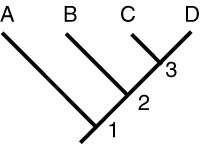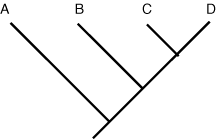Phylogenetic Systematics Excercise
Part I: Reading cladograms:
1. In the following cladogram, which node occurred earliest in time?
2. In the cladogram for question 1:
answer
answer
answer
answer
3. Of the cladograms shown below, which one shows a different evolutionary history from the others?
Part II: Types of groups.
4. Three taxonomic groups are circled on the cladogram below. Indicate what type of group they represent.
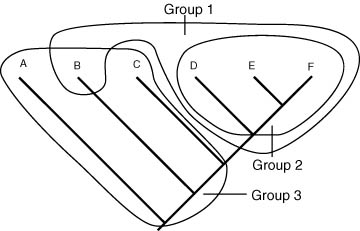
Group 1:
answer
Group 2:
answer
Group 3:
answer
5. A simple cladogram of vertebrate relationships is shown. A circle has been drawn around all the parts of the cladogram that traditionally would be known as "fish."
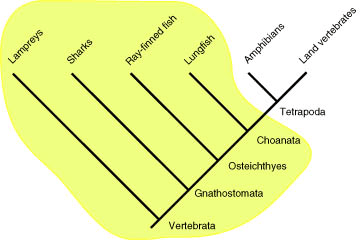
answer
answer
Part III: Synapomorphies
6. The simplified cladogram of vertebrata is now shown with synapomorphies indicated.
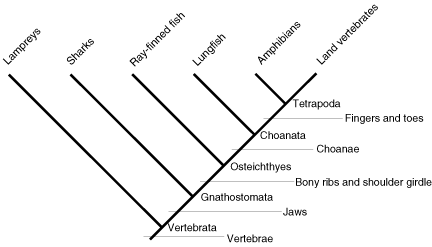
answer
answer
answer
answer
Part IV. A systematist is exploring a planet in another solar system and discovers the following four interesting species. After being told that species "A" is very primitive, our systematist decides to use it as the outgroup for a phylogenetic systematic analysis.
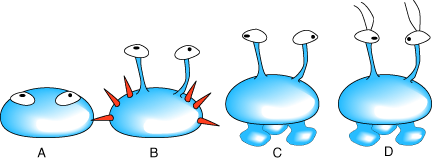
The following character matrix is scored:
| Character 1. Eyes present 2. Spines present 3. Eyes on stalks 4. "Feet" present 5. Antennae present |
A 0 0 0 0 0 |
B 0 1 1 0 0 |
C 0 0 1 1 0 |
D 0 0 1 1 1 |
7. A cladogram is generated. Mark on the tree the appearance of all characters.
8. Answer the following:
answer
answer
answer
answer
answer
answer
9. Suppose that our systematist had decided that this was the proper cladogram:
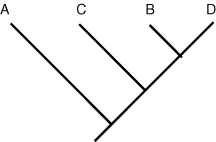
Map the character state changes from the matrix onto this cladogram.
answer
answer
answer
answer
Part V. Now you are the systematist, performing a phylogenetic systematic analysis on a group of imaginary beetles. Assume that you have prior knowledge that taxon A is more distantly related to the others than any of the others are to one another. This means that A would be a good choice for an outgroup.

10. Score the following matrix:
Give all characters a state of "0" for ancestral (same as outgroup) and "1" for derived (different from outgroup).
| Character 1. Large jaws present 2. Small antennae present 3. Spots present 4. Stripes present |
A answer |
B |
C |
D |
Bearing in mind that the character states seen in the outgroup, A, are, by definition, ancestral, answer the following questions:
answer
answer
answer
answer

